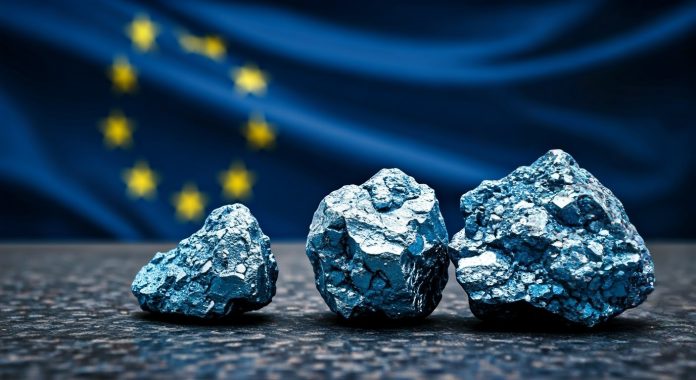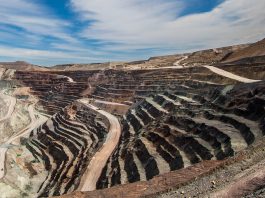The European Bank for Reconstruction and Development (EBRD) has recently launched a joint facility with the EU for critical and strategic raw materials. The Innovation Platform spoke to EBRD’s Tetiana Dzhumurat to find out more.
Critical and strategic raw materials are key components needed for the European Union’s (EU) digital and green transition. In a bid to minimise supply chain disruptions and increase Europe’s supply of these materials, the EU has introduced a series of strategies and policies in recent years. These include the Critical Raw Materials Act, which aims to strengthen the EU’s critical raw materials capacities along all stages of the value chain and to increase Europe’s resilience by reducing dependencies. In addition, following Russia’s invasion of Ukraine, the EU launched the REPowerEU Plan to phase out Russian fossil fuel imports.
Supporting the objectives of both the Critical Raw Materials Act and the REPowerEU plan, the EU and the European Bank for Reconstruction and Development (EBRD) have partnered to launch a joint facility for critical raw materials (CRMs) as part of the InvestEU programme. The facility will provide equity investments for the exploration of critical and strategic raw materials, aiming to mobilise up to €100m in investments. The new joint facility will support the objectives of the EU’s Critical Raw Materials Act and the REPowerEU Plan.
The EBRD is investing €25m in the facility and this will be matched by the EU’s contribution from the Horizon Europe Programme. The facility aims to mobilise a further €50m.
The facility will build on the EBRD’s extensive experience in financing mining projects, facilitating early-stage equity investments in operations in EU Member States where the Bank operates, as well as EBRD economies outside the EU that are covered by the Horizon Europe programme. Through this facility, the EBRD expects to invest in 5-10 junior mining companies (small and medium-sized enterprises, medium-sized enterprises or small mid-caps) that undertake critical raw material exploration in eligible countries.
The exploration activities funded under the facility will have to adhere to strict climate, governance, environmental and social standards. The EBRD’s rigorous Paris Agreement Alignment and Environmental and Social Policy screening will be applied to all projects.
To find out more about the facility and how it fits with the EBRD’s own values and mission, The Innovation Platform spoke to Tetiana Dzhumurat, Principal Banker, Natural Resources, at EBRD.
Can you elaborate on what the facility will do?
The €50m facility will provide equity and quasi-equity financing to early-stage mining companies pursuing exploration (post-resource discovery) of critical and strategic raw materials to enable them to progress various studies and works required to reach feasibility and construction stage. This facility is part of a broader Junior Mining Programme recently approved by EBRD’s Board.
Why is it important for the EBRD to support early-stage mining companies and projects?
These companies are under-serviced by the limited depth of equity capital markets and private equity. This is particularly true in the region where this facility will be deployed.
How does this investment fit with the EBRD’s mining sector strategy?
This facility is fully aligned with the EBRD’s mining sector strategy. In particular, one of the four key priorities of the strategy is “to selectively support the exploration and production of metals and minerals required for the green energy transition and digitalisation.”
How will you ensure that the exploration activities supported by the facility meet high climate, governance, environmental and social impact standards?
EBRD’s Mining Sector Strategy stipulates that the EBRD will review mining sector projects on an individual basis and check them against a robust set of requirements, including the Bank’s Environmental and Social Policy (ESP) and Performance Requirements. All projects will be subject to rigorous environmental and social due diligence and monitoring. As specified in the ESP, projects will be required to apply good international practice, such as the Global Industry Standard on Tailings Management.
In line with EBRD’s commitments, all projects it supports will be aligned with the objectives of the Paris Agreement and the Green Economy Transition Approach. Compliance with the Bank’s Environmental and Social Policy (ESP) and Performance Requirements will be contractually agreed with the companies implementing the projects and subject to monitoring by the Bank’s Environmental & Social specialists and consultants where necessary.
About the EBRD
The EBRD is a multilateral bank that promotes the development of the private sector and entrepreneurial initiative in 36 economies, including some EU countries. The Bank is owned by 73 countries as well as the EU and the EIB. The EBRD’s mandate focuses on fostering the transition towards open market-oriented economies, and its investments are aimed at making the economies in its countries of operation competitive, inclusive, well-governed, green, resilient, and integrated.
Please note, this article will also appear in the 19th edition of our quarterly publication.








